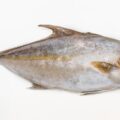Grouper and tilapia are both very common fish around the world. However, these two fish are also completely different species. This is why you will find many differences between grouper and tilapia. Grouper and tilapia are both popular seafood choices. Grouper is a large saltwater fish that lives in reefs, while tilapia lives in freshwater ponds. Grouper has a mild taste with firm white flesh, while tilapia has a sweeter flavor and flakier texture.
Both of them look completely different. These two fish have different habitats and different nutritional values, as well. Granted, they are both species that are edible, but except for that, you will find many differences between the two.
Differences Between Grouper and Tilapia
Appearance
The first and easiest difference between the two is clearly the appearance of the fish. Since tilapia is a species of the cichlid family, they have a laterally compressed and deep body. The fish has a long dorsal fin along with a lateral line that often breaks towards the end of the dorsal fin and starts again with two or three rows of scales below. The fish is not brightly colored as it is usually silver in color.
Groupers are brownish or gray-colored fish with a stout body and very large mouth that helps them consume fish. These are huge fish that are not built to swim long distances, and they just spend time resting until the prey comes to them. There are many grouper species, and some are considered fancy as well.

Habitat
There is a clear difference between the places they occupy in this world. Tilapia are usually found in shallow streams, ponds, rivers, and lakes. These fish are very sensitive to the temperature of their habitat, but except for that, they are very adaptable, as some species of tilapia are also found in brackish water with very high salt concentrations where other freshwater fish cannot survive.
On the other hand, groupers are mainly found in rocky and coral reefs of the tropics and sub-tropics around the world. There are goliath groupers that are found in the Pacific Ocean and the Atlantic Ocean. They inhabit deep water, unlike tilapia fish, which are found in shallower waters.
The Spawning Method
The reproduction of both species of fish is unique. Tilapias have a simple breeding method. They are mouth brooder fishes. The process starts with the male fish finding a hole that is the nest where the male will guard the eggs. After the fertilization of the eggs, the female fish scoops the eggs into her mouth until they are ready to come out. In this process, the female fish does end up eating some of the eggs.
When it comes to groupers, their breeding process is much more complex, which is why their numbers are dwindling. Most species are protogynous hermaphrodites, which means they are born as females, and after sexual maturity, they can change their gender to male. The largest male fish controls a harem of around 15 female fishes, and they pair to spawn.
The Popularity
Although both fish are known, tilapia is clearly more popular, especially as food. It is the third most produced fish in the aquaculture world, with China being the biggest producer. These are hardy fish that can reproduce quickly, which is why they are very popular as food. They are affordable and easy to grow. It is the most popular white fish in the world. Tuna and salmon are the only fish which are eaten more than tilapia.
Groupers are not as famous as a food source because the majority of groupers eaten are either black groupers or red groupers. Groupers are a fish that is famous as an angler fish, where they are caught and released again, such as goliath groupers. You will not find grouper meat in restaurants as easily as tilapia meat, unless you are in the areas where they are more prominent.
The nutritional value
Of course, the nutritional value of both fishes is very different as well. Tilapia is a fish that is richer in vitamin B12, vitamin B3, selenium, and copper compared to grouper fish. In fact, the coverage for vitamin B12 in tilapia is 41% more in this fish compared to grouper. Therefore, tilapia is higher in vitamins. This fish is also higher in protein and fats.
On the other hand, grouper fish is higher in vitamin B6, potassium, and vitamin B5. Grouper has more minerals like calcium, iron, magnesium, and zinc than tilapia. The calories in grouper are lower compared to tilapia as well.
The taste
The taste of tilapia is said to be sweet, yet mild, so it absorbs a lot of outer flavors. If you want the natural taste of the fish, avoid adding too much seasoning because the taste also depends on how well the fish was brought up and what was the diet of the fish. It is flaky fish with no fishy taste that some other fishes might have.
Grouper is also a mild-tasting fish with almost no taste in itself. It is good to prepare with seasoning, as the natural flavor is very mild. The fish is also firmer compared to tilapia and much rarer. The red grouper is sweeter compared to the black grouper, but the black grouper has more meat on it. The skin of grouper is completely inedible, and you cannot eat too much of this fish.

Conclusion
Now, you know that tilapia and grouper fishes are very different. Except for both fish being edible and tasting a little similar, they are both unique fishes that are found in the wild.
Tilapia and grouper look completely different and have different habitats, mating rituals, popularity, nutritional value, and much more. Tilapia is much more available compared to grouper because it reproduces faster and costs much cheaper. When it comes to nutrition, both fish are equally good for you.











